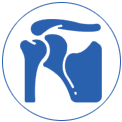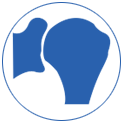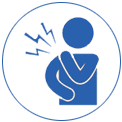Dr Gautam Tawari is an accredited orthopedic sports surgeon from The Royal College of Surgeon in the UK. He has a Diploma in Sports & Exercises Medicine (Dip.SEM) from the Royal college and is a Fellow of the Sports & Exercise Medicine Society of the UK.
He has worked as a Consultant Orthopaedic Shoulder Surgeon in the UK, Now Practicing as a Shoulder Sports Surgeon in Mumbai and specialises in advanced Shoulder joint arthroscopy & Sports related injuries to the Shoulder joint.
The common sports related injuries he routinely treats surgically include – Rotator cuff repairs, Bankart Repair and Shoulder Stabilisation surgery, SLAP repair and biceps related pain.
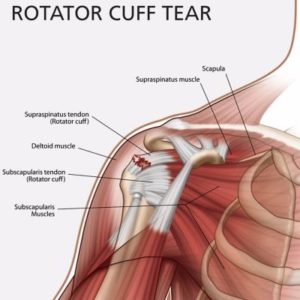
The rotator cuff is a group of four muscles that comes together to form a large tendon called the “cuff” which allows the shoulder to move normally. Tears of the rotator cuff disrupts shoulder balance and causes dysfunctional movement, weakness, and pain.
Cause
Tears of the rotator cuff occurs from a traumatic shoulder injury (such as a fall), or due to gradual (chronic) breakdown over time.
Presentation
The most common symptom of a rotator cuff tear is shoulder pain that is associated with weakness. The pain often radiate to the neck and upper arm, but rarely travels below the elbow. Patients often have significant pain at night and difficulty in sleeping.
Treatment
Most rotator cuff tears will progress over time and lead to worsening shoulder function and arthritis requiring surgical repair. Non-surgical treatment of a rotator cuff tear or tendon inflammation usually consists of a short period of rest, anti-inflammatory medications and a short course of physiotherapy.
Surgical management of rotator cuff injuries, is most often done through a minimally invasive (arthroscopic) technique. Arthroscopy provides a full diagnostic tour of the joint, and allows for treatment of any other abnormalities seen. The torn rotator cuff is repaired back to bone using suture anchors and varying stitching techniques.
Recovery
Full recovery (return to normal activities) can be expected by 4-6 months. Patients are required to wear a sling for 3 weeks after surgery. After the first 3 weeks, the sling is discontinued and physiotherapy is started. This progresses over 3 phases, and takes approximately 2-3 months. A gradual return to full activity is encouraged, and by six months, the shoulder is nearly back to normal except during strenuous sporting activity.
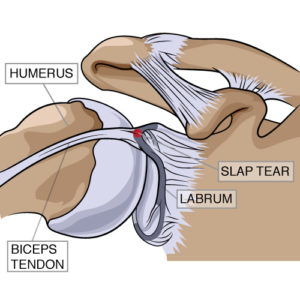
The shoulder joint has a ring of labral tissue around the shoulder socket that stabilizes the head of the upper arm bone. A SLAP tear occurs when there is damage to the top of the labrum, or where the biceps tendon connects to the labrum.
SLAP is an acronym and stands for Superior (topmost) Labral tear from Anterior (front) to Posterior (back).
Cause
Injuries to the superior labrum can be caused by acute trauma or by repetitive shoulder motion. An acute SLAP injury may also result from :
- A motor vehicle accident
- A fall onto an outstretched arm
- Forceful pulling on the arm, such as when trying to catch a heavy object
- Rapid or forceful movement of the arm when it is above the level of the shoulder
- Shoulder dislocation
People who participate in repetitive overhead sports, such as throwing athletes or weightlifters, can also experience labrum tears as a result of repeated shoulder motion.
Presentation
The most common symptoms of a SLAP tear include:
- A sensation of locking, popping, catching, or grinding
- Pain with movement of the shoulder or with holding the shoulder in specific positions
- Pain with lifting objects, especially overhead
- Decrease in shoulder strength
- A feeling that the shoulder is going to “pop out of joint”
- Decreased range of motion
- Athletes may also notice a decrease in their throw velocity, or the feeling of having a “dead arm” after repeated throws.
Treatment
The initial treatment for a SLAP injury includes:
Non-steroidal anti-inflammatory medication. Physiotherapy with specific exercises that helps to restore movement and strengthen of shoulder.This exercise program is continued anywhere upto 3 months. Surgery is recommended if the pain does not improve.
The surgical technique most commonly used for repairing a SLAP injury is arthroscopy. An anchor is used to repair the torn tissue.
Recovery
After surgery the arm is kept in a sling for 3-4 weeks to protected the repair while the labrum heals. A tailored physiotherapy program is then introduced which last for 4-6 weeks. Return to sports is generally at 4 – 6 months.
Shoulder instability is a problem that occurs when the structures that surround the shoulder joint do not work to maintain the ball within its socket.
Cause
Shoulder instability occurs when the head of the Humerus (arm bone) in forced out of the socket. This can happen as a result of a sudden injury or from overuse.
A severe injury cause the shoulder to become unstable by stretching or tearing the ligaments of the shoulder. When the ligaments of the shoulder are pulled away from the bone, this injury is called a “Bankart lesion.”
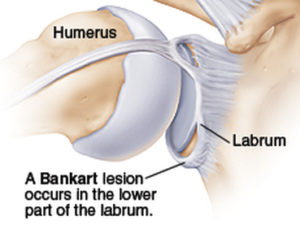
Presentation
Common symptoms of shoulder instability include:
- Pain caused by shoulder injury
- Repeated shoulder dislocations
- Repeated instances of the shoulder giving way.
- A persistent sensation of the shoulder feeling loose, slipping in and out of the joint.
- Athletes with instability will have a feeling that the shoulder wants to “come out of socket”.
Treatment
Physiotherapy with specific strengthening exercises helps to strength the shoulder and maintain the joint in proper position. This most likely helps patients with multi-directional instability.
Shoulder arthroscopy is necessary to stabalise the shoulder. Torn ligament can be repaired using anchors and loose capsule can also be tightened.
Recovery
After surgery, arm is kept in a sling to avoid use 3 weeks. Full healing takes 3 – 4 months. Physiotherapy is carried out in 3-4 phases from 3 weeks onwards upto 3 months.
Surgical repair provides pain relief, improvement in strength and function, and patient satisfaction, however surgeons expertise is more important in achieving satisfactory results.
